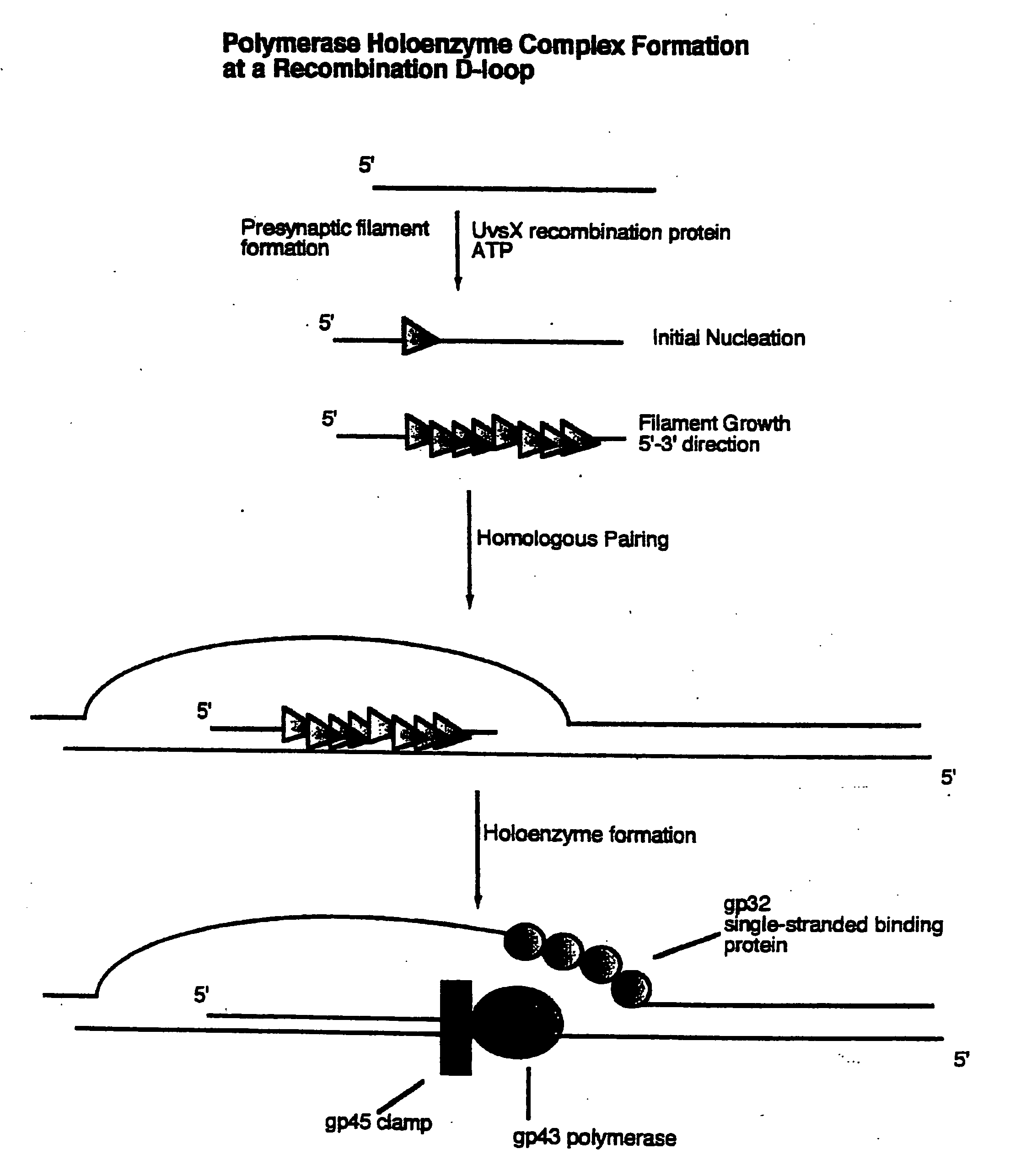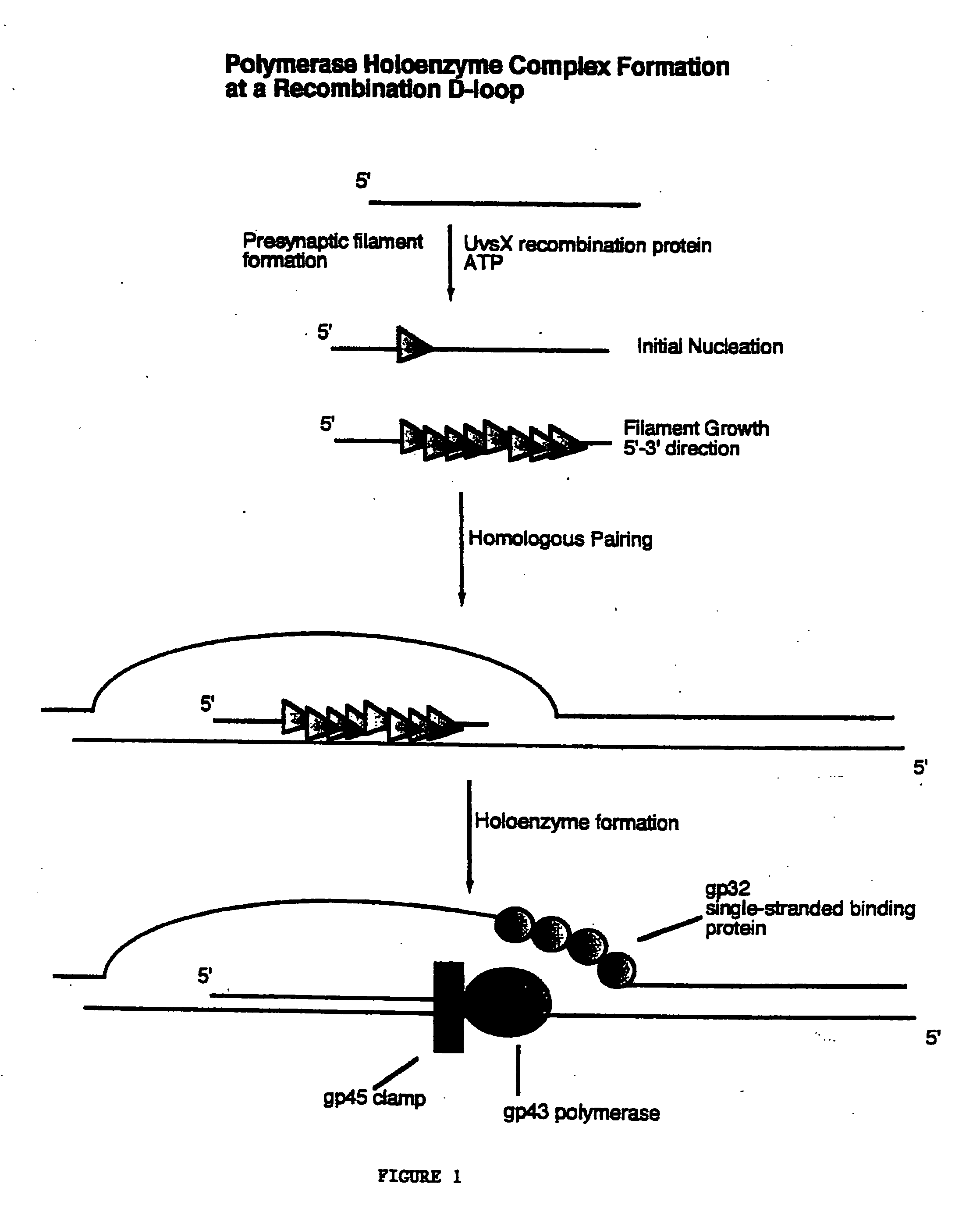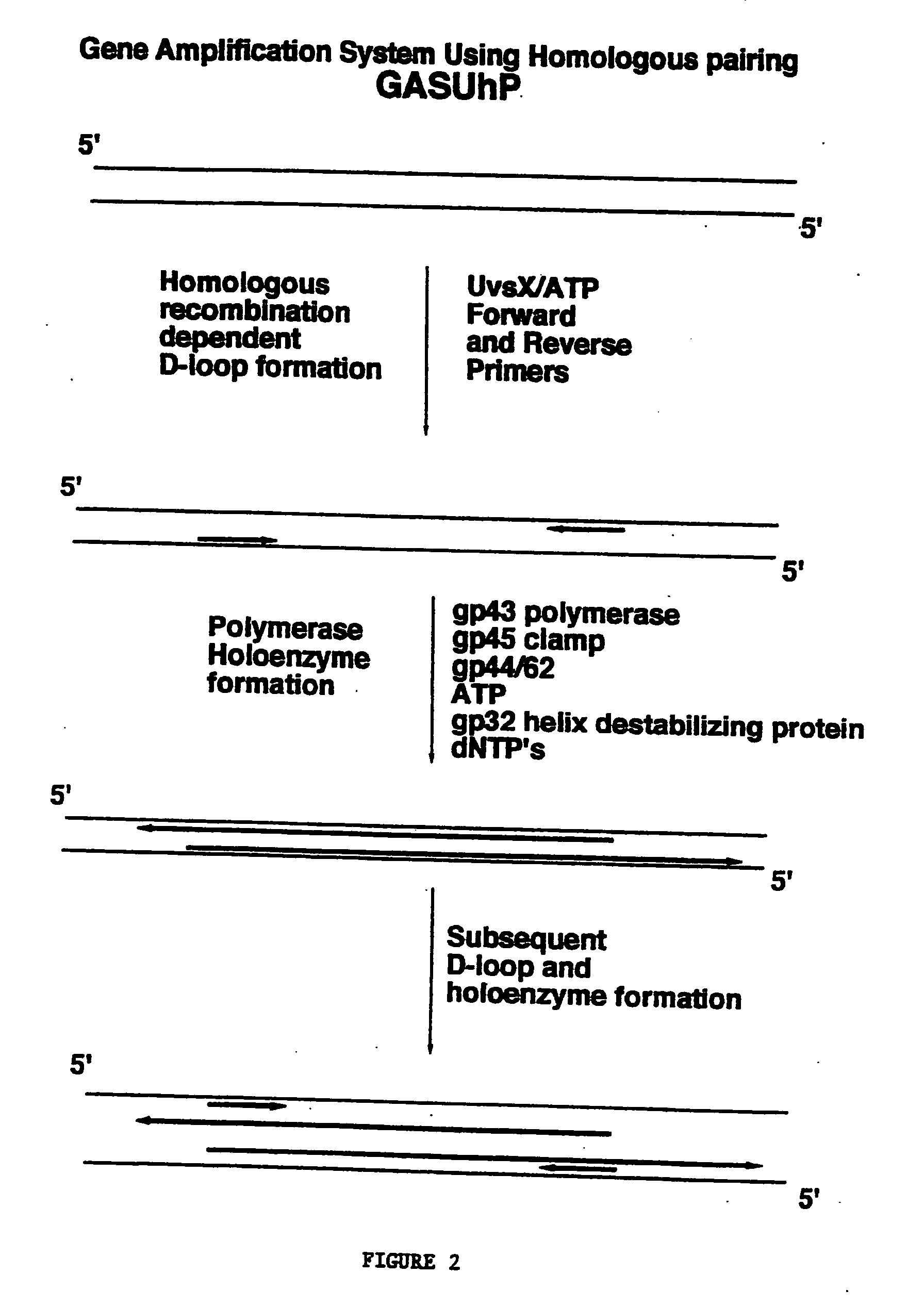Methods for nucleic acid manipulation
a nucleic acid and manipulation technology, applied in the field of nucleic acid manipulation, can solve the problems of lack of fidelity of various, high cost of temperature bath, and inability to achieve the theoretical amplification value in practice, and achieve the effect of facilitating replication
- Summary
- Abstract
- Description
- Claims
- Application Information
AI Technical Summary
Benefits of technology
Problems solved by technology
Method used
Image
Examples
example 1
[0060] Homologous recombination directed nucleic acid amplification of closed circular plasmid DNA using the T4 holoenzyme complex and the T4 homologous recombination proteins UvsX and gene product 32 were performed as follows. Oligonucleotide primers were designed to amplify a 3220 base pair fragment from M13mp18 plasmid DNA as follows:
(SEQ ID. NO. 1)1940-5′TGATACACCTATTCCGGGCTATACTTATAT-3′and(SEQ ID. NO. 2)51605′-CGCTCAATCGTCTGAAATGGATTATTTACATTGGCAGATT-3′.
[0061] These primers were used for the amplification of a 3220 base pair fragment from closed circular M13mp18 plasmid DNA. Reaction conditions were set up to facilitate the assembly of the polymerase holoenzyme, including bacteriophage T4 gene products 43, 45, and 44 / 62, on recombination intermediates formed by the action of bacteriophage T4 UvsX protein. The concentration of double stranded closed circular M13mp18 plasmid DNA was set at 10 micrograms per milliliter (2.1 nanomolar as nucleotides). Both oligonucleotides, 1940 ...
example 2
[0064] Homologous recombination directed nucleic acid amplification of linear plasmid DNA using the T4 holoenzyme complex and the T4 homologous recombination proteins UvsX and gene product 32. M13mp18 double stranded closed circular plasmid DNA was made linear by digestion with the BamH1 restriction endonuclease. 10 micrograms M13mp18 and the BamH1 restriction endonuclease were incubated at 37° C. using standard buffer conditions for 2 hours followed by phenol / chloroform extraction and passage through two G-25 spin columns. Reaction conditions were as described for Example 1.
PUM
| Property | Measurement | Unit |
|---|---|---|
| temperature | aaaaa | aaaaa |
| temperature | aaaaa | aaaaa |
| temperature | aaaaa | aaaaa |
Abstract
Description
Claims
Application Information
 Login to View More
Login to View More - R&D
- Intellectual Property
- Life Sciences
- Materials
- Tech Scout
- Unparalleled Data Quality
- Higher Quality Content
- 60% Fewer Hallucinations
Browse by: Latest US Patents, China's latest patents, Technical Efficacy Thesaurus, Application Domain, Technology Topic, Popular Technical Reports.
© 2025 PatSnap. All rights reserved.Legal|Privacy policy|Modern Slavery Act Transparency Statement|Sitemap|About US| Contact US: help@patsnap.com



